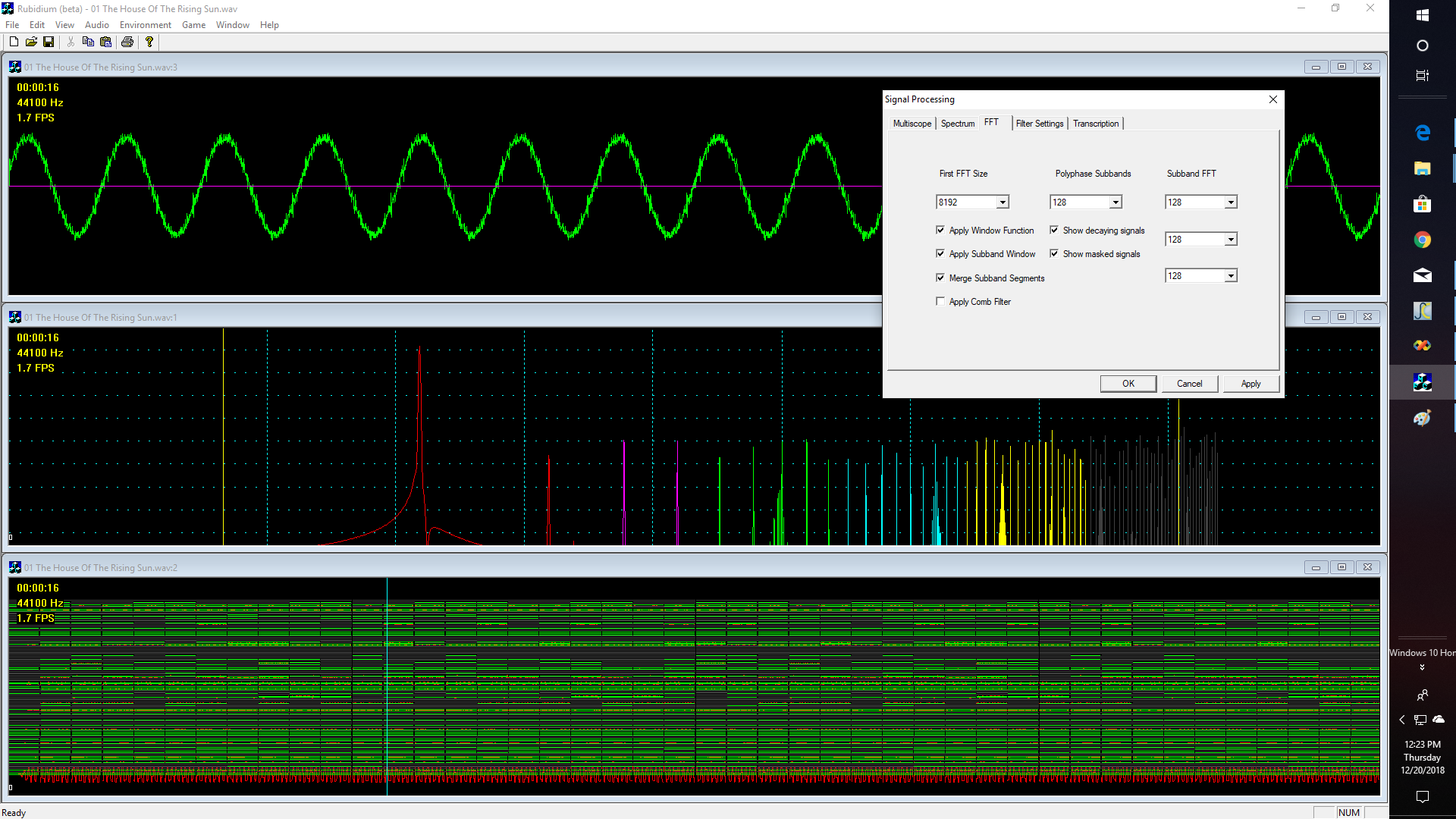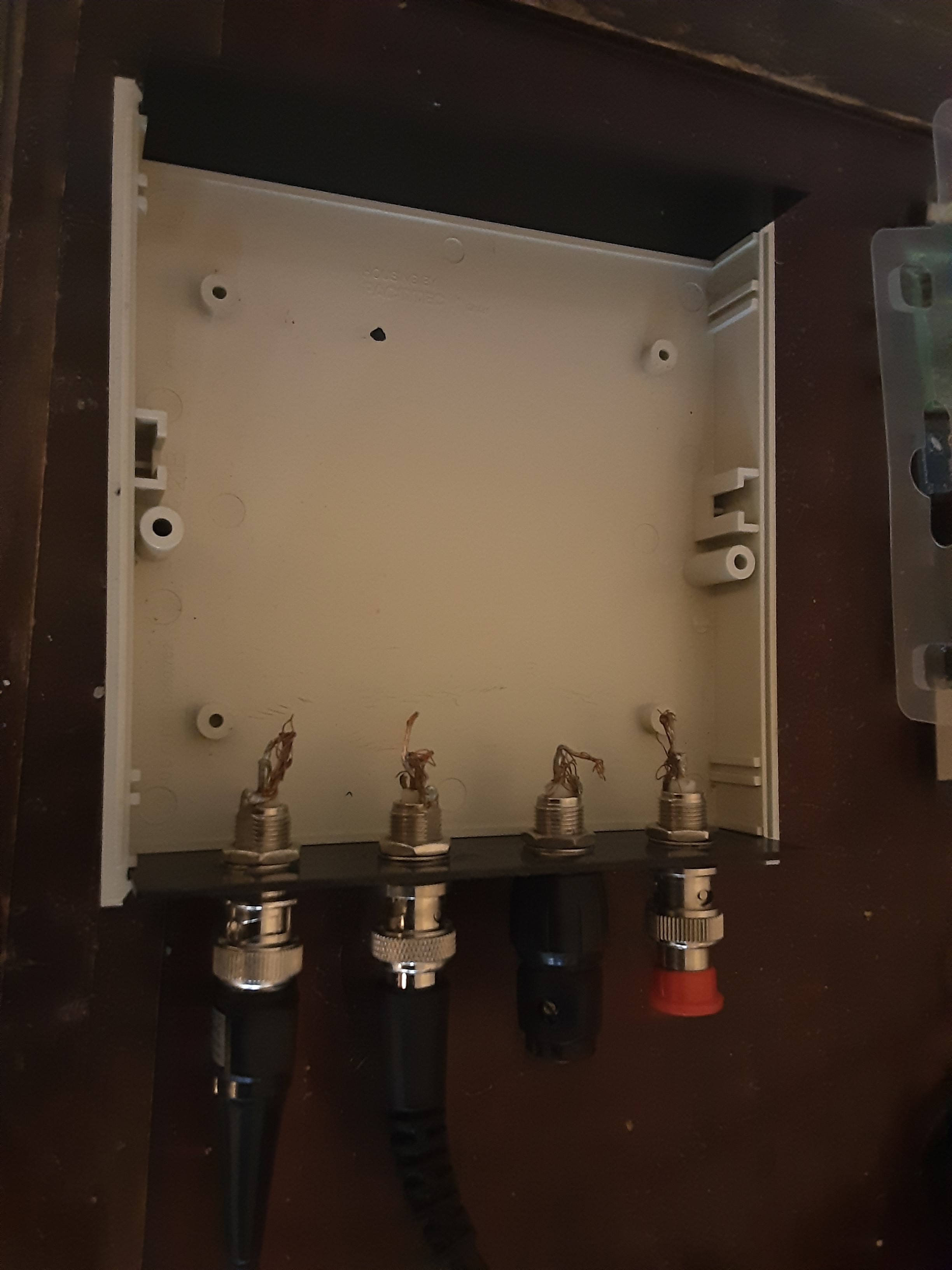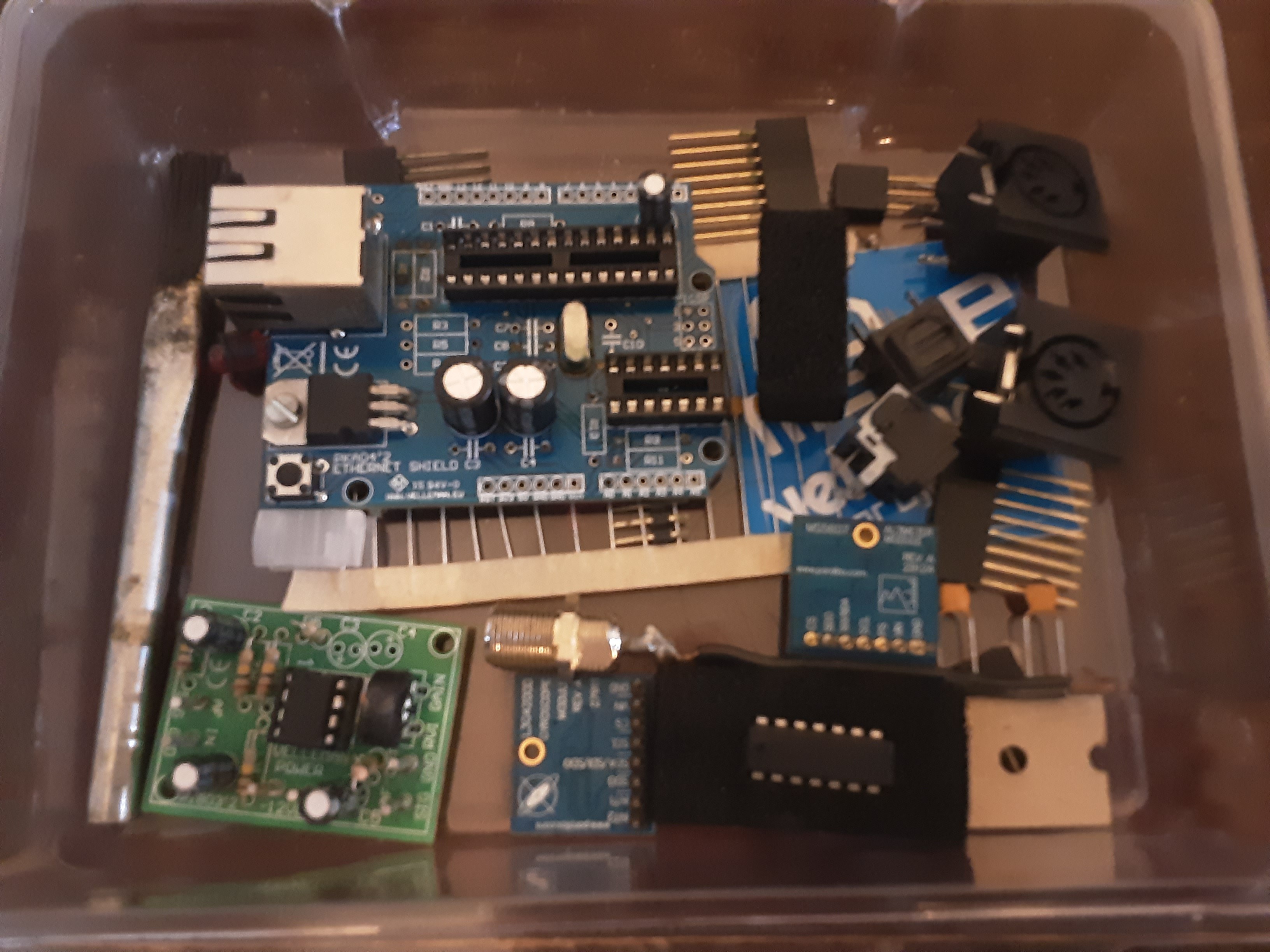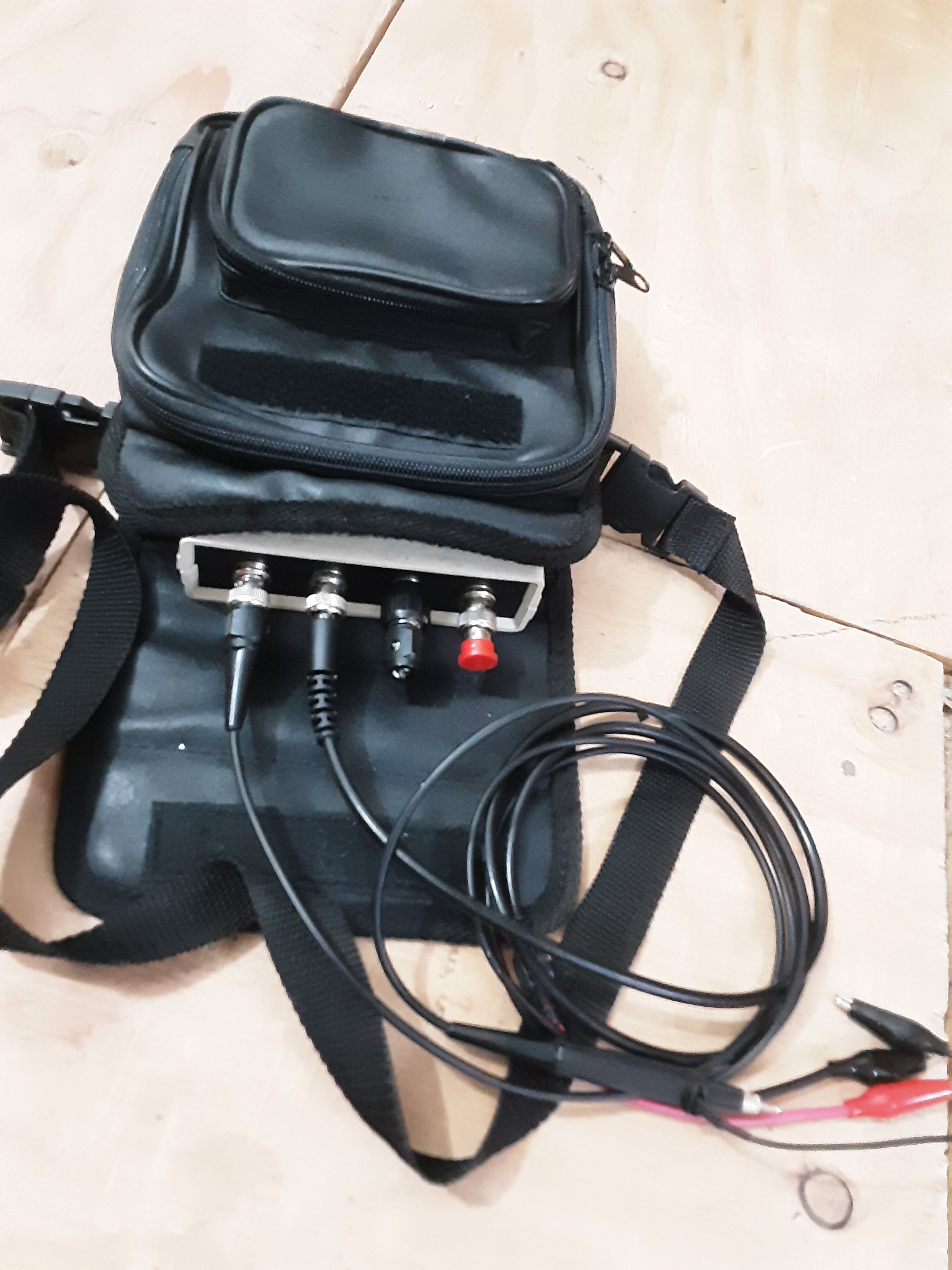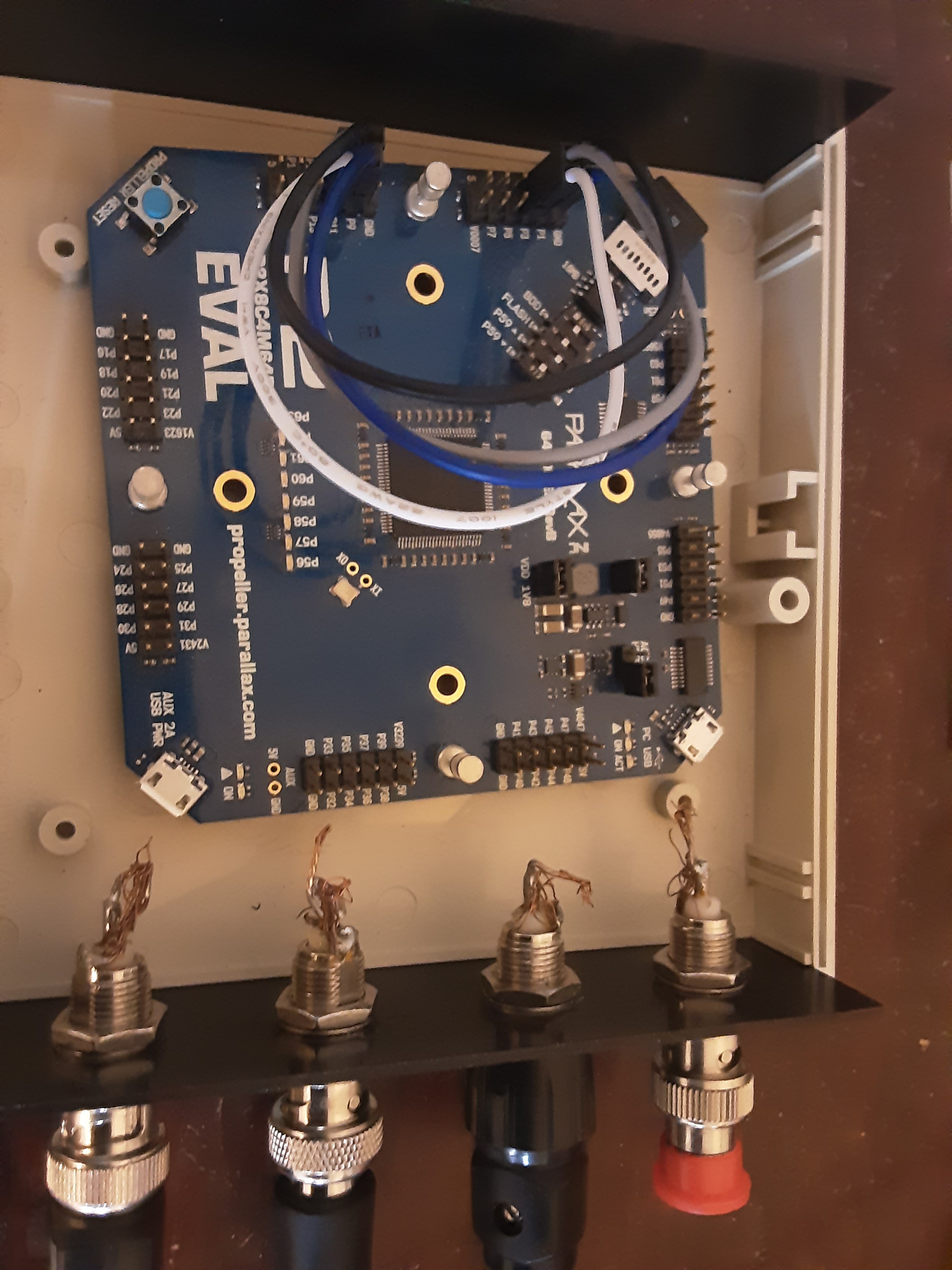-
The Lazarus Syndrome
10/07/2021 at 23:13 • 0 commentsFor lack of a better title, it is what it is. If you don't already know it, Pascal is a language that refuses to die, and thus there is also Lazarus, which is a free and open-source Pascal compiler. Now of course it would be nice to have Lazarus to run on the Parallax Propeller P2, as well as many other microcontrollers, but most people would never even begin to guess why. So let's warm things up a bit, with a screen shot from "Stalking the Big One", 2019 edition.
![]()
What you are looking at is some of the capabilities of the full "Rubidium" project; which features an oscilloscope mode, multiple spectrum analyzer modes, including linear as well as log and log-log plots, and also multi-channel logic analyzer modes that allow for examination in the time domain of up to as many channels as your screen resolution will allow. In this case we are taking an audio signal, and passing it through an initial 8192 point FFT; which is then split up into 128 blocks of frequencies, which in turn are then each being converted back into individual time domain signals. I should probably redo this image with just four or eight channels, for clarity. Nonetheless, each of the individual sub-bands can then be converted back into the frequency domain, again, and what this lets us do - if you think about it is take a signal that might be initially sampled at 44100 Hz, and turn it into 128 "sub-band" signals which are each sampled at 44100/128 = 344.53 Hz, and where each, therefore, has a 172.27 Hz, bandwidth, with far superior anti-aliasing that what you would otherwise achieve with just an ordinary 256 point FFT alone. In turn, this greatly simplifies such tasks as "event" detection, "beat" detection, or for those who want to try their hand at speech recognition, this might be one way to do formant recognition, at least as far as greatly simplifying the process of vowel recognition.
Furthermore, if you check the Parallax forums, there is an assembly language FFT that was published by Chip Gracey, which takes advantage of the P2 chips built in pipelined CORDIC solver, so as to reduce the "regular" FFT algorithm to just 78 longs!, You read that right - 78 longs * four bytes/long = 312 bytes, as has been demoed on the Parallax forums. Seriously! Now eat that Raspberry Pi! Where's your 3.14159265358979 now?
The showstoppers of course that are preventing anyone from doing some REALLY cool modular synth stuff, is the lack of software tools that work effectively with high-level languages. C++ would be oh so nice right now! But how about object Pascal? Or Lazarus? The Lazarus project of course is about 200 Megabytes - but it IS arguably Pascal on the one hand, and it is open source/free - and yet it has fun stuff like this excerpt from some file entitled "frmconfigfilebrowser.lfm", which appears to be some kind of dialog template for some kind of file browser GUI.
object FileBrowserConfigForm: TFileBrowserConfigForm Left = 302 Height = 200 Top = 184 Width = 400 Caption = 'Configure file browser' ClientHeight = 200 ClientWidth = 400 OnShow = FormShow LCLVersion = '0.9.25' object ButtonPanel1: TButtonPanel Left = 6 Height = 46 Top = 154 Width = 388 Align = alBottom AutoSize = True TabOrder = 0 ShowButtons = [pbOK, pbCancel] endAnd there is about 200 Megabytes of this stuff. Now whether "lfm" stands for "Lazarus Frame" or whether it stands for "Frame Lisp compatible" might depend on whether you think that GNU stands for GNU is NOT Unix or not.
Of course, I know that people want to see it run on the Propeller, but it appears that the only way that there is any hope for that is if I write my own compiler. Ideally C++, but any appropriate dialect of Object Pascal would also do. Yes, that would also do - very nicely.
-
The Empty Store
10/07/2021 at 20:35 • 0 commentsThat was one of my favorite Seargent Bilko episodes. If you are familiar with the one where Bilko rents an empty store, and everyone wants to buy a piece of the action. Sadly, Radio Shack's are gone, and now Fry's. So I can't tell you just where to buy one of these old project cases from something that I ACTUALLY built sometime back around 1994. Yet it does appear to be capable of housing a P2 Eval board well enough to be able to hook up scope probes or other devices via the provided BNC connections. Some series resistors would probably be a good idea, as a sanity check. Maybe there is nothing to see here. Perhaps these aren't the 'droids you are looking for. Or Maybe.
![]()
Maybe we could add an op-amp kit for Welleman for input and output buffering. Now as it turns out, I built the Welleman kit, but left some capacitors out, since the kit is a two-stage op-amp; and by leaving those capacitors out, or at least off the board, I can possibly use it for separate audio input and audio output. Also seen are various components that might turn out to be useful, such a MIDI connector, SPDID, Ethernet, and so on. There is even a barometric pressure sensor, and altimeter module. Now, what might that be useful for? A home weather station? A digital flute or saxophone? But what if I don't play the saxophone? We're not quite there yet, in any case. But ah, the possibilities!
![]()
Now we get a closer look. Will it work?
![]()
As it turns out I could probably cram quite a few of the aforementioned parts into "the empty" store, even if the space is a bit cramped, but the payoff might be well worth it. I'm not sure what the brand name is on this fun little camera gadget bag that I just happen to have around. Yet now we are in the realm of possibilities for such things as portable 4-channel oscilloscope, with Bluetooth interface, or simple audio and or NTSC video in-out fun stuff. The Parallax P2 EVAL board has an interesting clam shell configurability, i.e., as a possible way to get more functionality in the available volume, without needing more horizontal board real estate. Of course, there is Arduino, but can Arduino go to over 200 Mhz on its digital I/Os?
The previous concept considered the use of a "blue" box, which is still under consideration, AND in use! But where is this train headed?
![]()
Rubidium 2.0
This is an all in one spectrum and logic analyzer, robotics control platform, and modular synthesizer with audio in and sheet music out!
 glgorman
glgorman